







Diving German WW1 minelaying submarine UC-42.
Sidescan sonar image of Wreck of 1692 (to be confirmed) discovered by Carroll O'Donoghue, owner/operator of HARPY, in 2015.
A selection of our underwater survey hardware. We're ready when you need us.
Wreck-diving off the Old Head of Kinsale
Commercial Divers working on undersea pipes outside Kinsale harbour.
Recovering Diver after ascent from Lusitania wreck.
Sunset in Kinsale, pictured from the quays.
Some time ago I was testing a new side-scan sonar in Kinsale for an upcoming underwater survey. The seabed in Kinsale harbour is reasonably uniform - long tracts of sandy gravel mixed with shell and mud. Interspaced ins this are smaller rippling sandbanks which sidle up against low rocky seafloor formations. The side-scan sonar being tested was towed about 20 metres behind my boat, HARPY, at about 3.5 knots. Monotonously the sonar was dispensing a reasonably uniform image of this seafloor on the interfaced computer's screen when suddenly a darker shape morphed into view. It was large and even at the long sonar range being displayed on-screen, the object was still clearly identifiable - a very large anchor of the old Royal Navy long-shanked admiralty-type or, given the peculiar extremely sharp-angled throat, possibly of French design. The Underwater Archaeology Unit (UAU) of the National Monuments Section of the Department of Arts, Heritage and the Gaeltacht was immediately contacted and they are following the progress of this case.
Where did the anchor come from? One has to guess at this point. There was no wreckage found in the general area so one possibility is that the anchor cable was cut to allow the vessel to leave in a hurry. Perhaps a storm blew up suddenly leaving the vessel which was anchored close to the shore very little options but to leave immediately for the safety of deeper waters offshore. Maybe an enemy vessel was spotted on the horizon and the possibility of a prize vessel was too tempting to delay for the time-consuming, labour-intensive process of weighing anchor. Maybe the anchor itself failed structurally - is is possible this occurred at the eye at the top of the shank, but this can only be confirmed by examining the anchor out of the water after removing concretions. Whatever the cause hopefully time will tell, but whatever the reason it was serious enough to sacrifice such a valuable piece of equipment - costly financially but also a huge safety asset whenever caught off a lee shore in high winds.
There could be other reasons for the anchor's presence. By way of example, here is an extract from the captain's log of the HMS ALBEMARLE, anchored at The Nore - that sand back at the mouth of the Thames - on 29th October 1781. The captain was a young Horatio Nelson:-
At 1/2 past 7 p.m. a tender's boat came on board and acquainted us that a number of East Indiamen was coming passed; that they would not admit the tender's boats on board to impress their men; in consequence of which we bro(too) and hove a great strain on the best bower. At 8 broke the Messenger. Reeved a purchase and broke it. Finding our efforts to purchase the anchor of no effect, and 4 sail of East Indiamen now abreast and some above us was obliged to cutt: leaving behind the best Bower anchor with the buoy, buoy rope and 20 fathoms of cable. At 11 got within hail of the HASWELL and ordered her to come to an anchor. But she, having all her men on board, would neither admit the boats to board her or bring(too) until we compelled her her by firing 26 nine-pounders and one 10-pounter shotted at her. ("The Royal George" Johnson R.F. 1971)
Some terms in the previous paragraph are worth explaining. The Best Bower was the biggest (best) anchor and of course was at the bow of the ship. A fathom is six feet - the approximate length enveloped by an adult's embrace with 2 arms. A fathom is also the largest expression of length that uses the human body as a metric - hence the expression "to fathom someone" . The Messenger was a continuous interwoven rope, wound around 2 pulleys or 2 capstans which were located on the ship's centre-line - one near the bow and the other close to the stern. The ship's cable, (the main anchor rope), was attached to the messenger by nips (small twines) at regular short intervals along over half of the anchor's side of the messenger. The rotation of the capstans by many of the ships crew wound the messenger around and, in doing so, also pulled the attached ship's cable - in through the hawse-pipe at the bow and dropping the cable into the lower hold about midships. The youngest of the crew, the cabin boys and captain's servants were given the task of tying the nips as quick as the cable was drawn in and, running alongside the cable as it traveled aft only to undo the nips just before the cable dropped down into the hold. They then had to run forward again and repeat the process, thereby earning the term "nipper" and adding a new word to the English lexicon. With only about 5' of headroom 'tween decks, the young crew were best adapted to this task.
It is clear that raising the anchor required much time and manpower, especially so with the larger war and merchant ships. Before the process of annealing was fully understood, the quality of anchors was poor with very many failing - particularly at the joints of the anchor's component parts, but also at the eye at the top of the shank.
The images here are from dives I made in 2020 on this anchor. Regrettably on the days the photographs were taken the light was poor and the high turbidity compounded the problem, so apologies for the poor quality of the images. There are videos available also at https://kinsaleangling.com/videos/category/old-anchor-found-in-kinsale but they too were taken in the same conditions.
To help get some reference point on the anchor, note the two ranging rods placed tip-to-tip at the meeting point of the shank and the left arm, (looking along the shank towards the crown). The ranging rods are 2m in length and have alternating red and white bands of 500mm. The overall length of the anchor from tip of crown to top of shank is just about 13' as can be seen from the measuring tape in the videos. The length from the tip of crown to the tip of fluke is 6'6". Concretions are not heavy but will have affected the figures above to a small extent.
So, where to now? Well, we are working on that and will keep you posted. So please stay tuned...

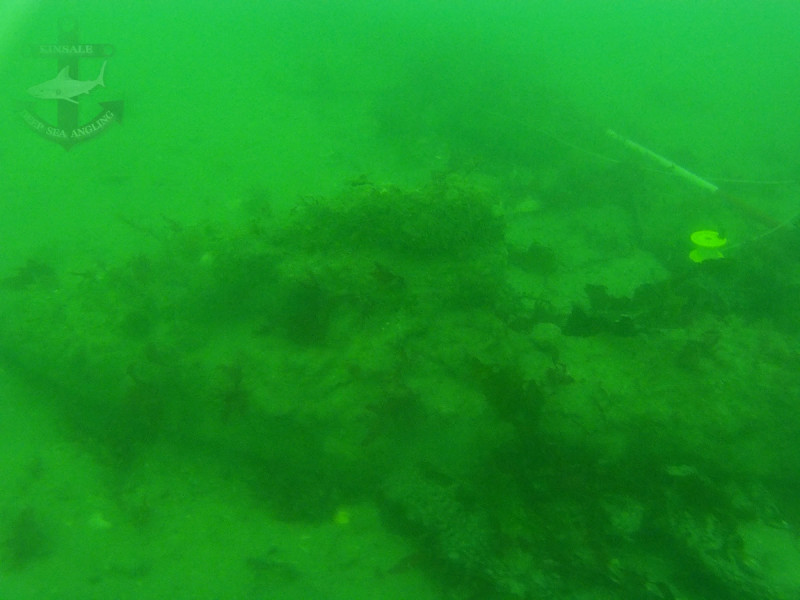
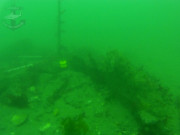
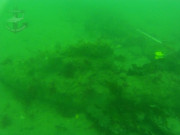
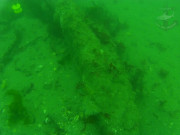
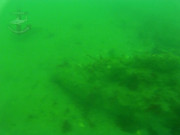
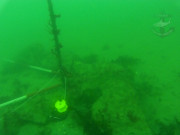
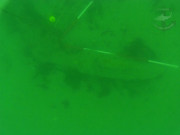
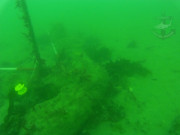
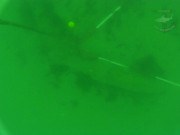
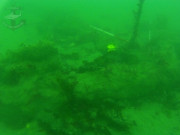
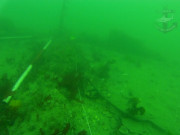
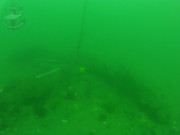
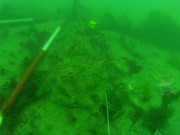
|
|
|
|